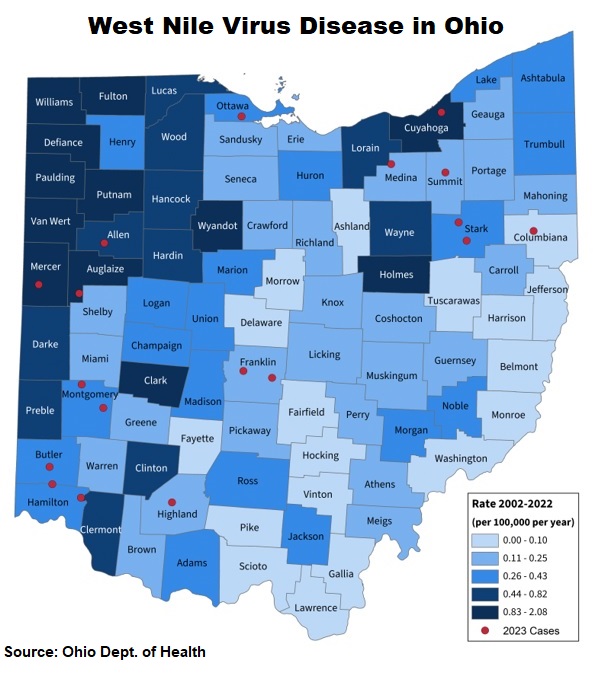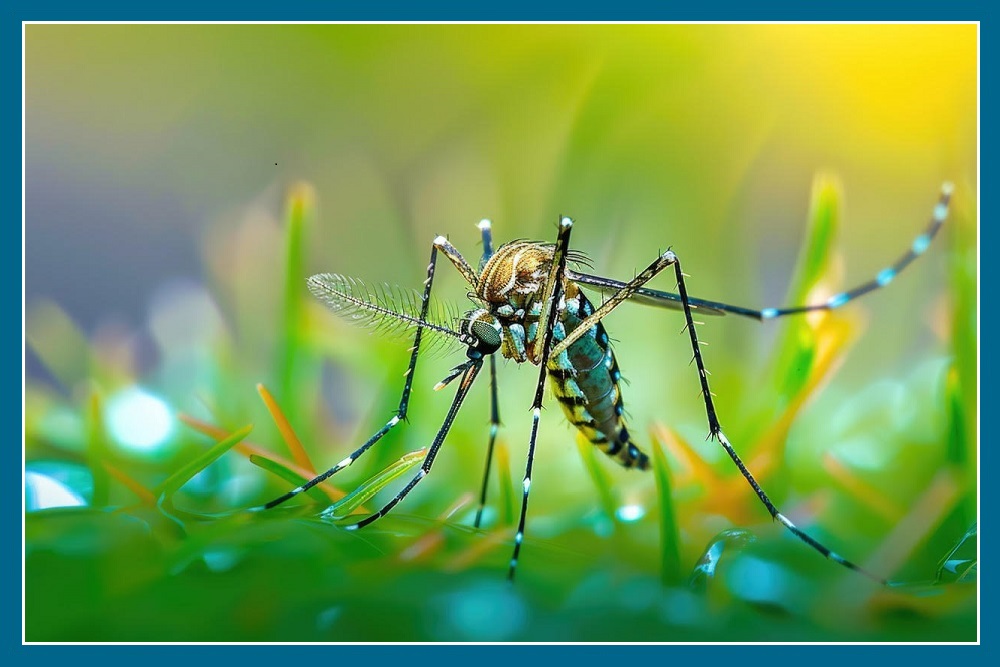Best Practices for Keeping
Nature’s Bloodsuckers at Bay
It’s July in Ohio, and that means mosquito season will soon reach its peak.
As a green industry professional, you can help reduce mosquito populations in your customers’ landscapes.
More Than Just a Nuisance
According to the CDC, West Nile virus (WNV) is the most common mosquito-borne disease in the continental United States. Around 2,205 cases are reported each year. Unfortunately, there is currently no treatment or vaccine for the disease. Although 80% of people infected are asymptomatic, 20% experience fever and flu-like symptoms. One percent of those will become disabled or die.
 The mosquito responsible for WNV is found throughout Ohio, but primarily in the northern and western parts of the state. About 58 human cases of the virus are reported each year in Ohio. However, epidemics can flare up under certain environmental conditions, such as the 441 cases in 2002 and 122 cases in 2012.
The mosquito responsible for WNV is found throughout Ohio, but primarily in the northern and western parts of the state. About 58 human cases of the virus are reported each year in Ohio. However, epidemics can flare up under certain environmental conditions, such as the 441 cases in 2002 and 122 cases in 2012.
Another mosquito-borne disease that affects Ohioans is the La Crosse virus (LACV). LACV is endemic in Ohio, where more human cases have been reported than any other state (about 20 per year).
The aggressive mosquito that carries LACV is a daytime biter commonly found in wooded areas, mainly in the state’s eastern and southern forests. LACV can cause swelling of the brain (encephalitis) and usually affects young people under the age of 16.
Breeding Ground
Mosquitoes breed in standing water. Any water that remains stagnant for more than a few days allows mosquito larvae to develop, particularly where debris serves as a food source. (Did you know that some mosquito species can breed in containers as small as a bottle cap?!)
Here’s what you can do:
 Bug Off!
Bug Off!
Certain plants possess active mosquito-repelling properties. Encourage your customers to incorporate some of these plants into their residential landscapes:
- Mint
- Bee Balm
- Allium
- American Beautyberry
- Catnip
- Marigold
- Fennel
- Basil
- Lavender
- Thyme
- Lemon Balm
- Sage
Source: The Spruce
- When designing a landscape, remember that certain soil types and natural terrain depressions can cause water to pool quickly.
- Conduct a full property inspection for potential pooling areas every time you visit a customer’s outdoor space. Drainage areas blocked by tree limbs, leaves, or rocks can result in stagnant water.
- If you observe any standing water, work with your customer to ensure the container (birdbath, planter, tire swing, pool cover, etc.) is emptied every three to five days, and the sides are scraped to dislodge mosquito eggs.
- Plug any hollow stumps or tree holes that hold water. Remind customers to drill holes in swings and other objects for drainage.
- Keep grass and shrubbery well-trimmed and repair leaky irrigation or drainage pipes.
Mosquito Control
Mosquito control that treats both young and adult mosquitoes can further reduce the pesky populations.
- The professionals at Site One recommend spraying LESCO Mosquito-Free Insecticide around the outdoor living space. Other control methods include traps and repellents, many of which are organic and bio-friendly.
- For areas with unavoidable standing water — such as water gardens — apply pet-safe Mosquito Dunks.
- Advise your customers about bio-friendly insecticides and mosquito repellents, such as NatureShield® and Mosquito Magician. These products will not harm birds or pollinators, and they can be applied directly through the homeowner’s irrigation system.
Sources:
Featured Image: Adobe, License Granted
Irrigation & Lighting
Ohio Dept. of Health
SiteOne






